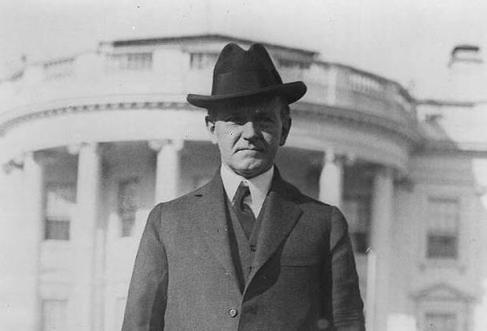(National Archives)
America in 1927 felt the effects of rain in a number of historic ways. The floods of the Mississippi and in Vermont were two such ways. Between them, heavy rains made the need for renovation of the White House vital. This involved strengthening the roof, expanding the attic into a third floor of eighteen rooms and clearing away the wood compromised since the burning of this House by the British in 1814. Arthur A. Sloane in his book “Humor in the White House: The Wit of Five American Presidents” recounts the tour of the attic, initially cleared by Presidents Roosevelt and Wilson for further use, by the chief architect, the contractor and Coolidge. Shown the extent of the damage exposed by the rains and the sections burnt over a century before, Coolidge was asked which he would approve: wood supports or steel girders? Closely examining the damaged wood, he answered in his typical dead-pan style, “All right. Put in the steel beams and send the bill to the king of England.”
P. S. While the choice of steel would help alleviate the weakness of the attic and roof, it would prove too much for the older foundations and would require emergency rescue by 1949 in what is dubbed the “Truman Renovation.” Short-term fixes, using small amounts of public money to maintain it, has been the history of this House for most of its illustrious life. For Coolidge, steel was worth the money but to overhaul the entire structure would take from the people what is theirs on a scale that was unnecessary at a time when clamor for spending was at fever pitch already. The President conscientiously resolved that the money belonged through tax cuts and reduction of expenditures in people’s hands instead of government coffers.

